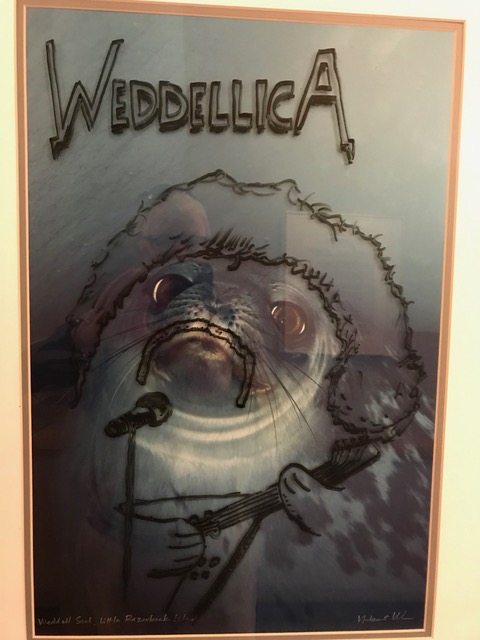If the weather holds, I’ll be departing Antarctica tomorrow morning. The time has gone by unbelievably fast.
I left off with the last post with the big Icestock New Year’s Eve concert. After that it was back to work. It is that time of the season when we start to get things ready for shipment back to the states - equipment and instruments that need to go back for repair or servicing, equipment that is no longer needed down here, etc. Plus we spent some time preparing some new equipment to deploy out at Castle Rock for overwinter tests. We are also working to service four seismic stations up on Mt Erebus, an active volcano, standing about 11,000 feet high, that is about 30 km from McMurdo. Before New Year’s my two colleagues flew up in a helicopter to service the first station. I am scheduled to be on the team to do the second station.
Thursday night we were on the schedule for night flight helicopter operations. Night flight just refer to flights that take place during the evening hours - it is actually total daylight 24 hours per day at this time of year in Antarctica. I was so excited for the opportunity to work near the summit of Erebus. But we had a weather cancellation - low clouds. Friday we were on the schedule again. Cancelled. Low clouds. Saturday we tried to get an afternoon helicopter slot, but no luck - they were all booked up. The helicopters don’t fly on Saturday night, so we were out of luck for Saturday evening, too.
Since we weren’t going to fly on Saturday evening, I signed up for a four hour evening trip (6:30-10:30 PM) out to the Pegasus crash site at Phoenix Field. I figured a late night tour was okay, since we have Sunday off. Phoenix Field is the airfield farthest out on the Ross Ice Shelf. About 45 years ago a Navy plane crash landed (no serious injuries) at the airfield, and the wreckage is still out there. You can only visit the site as part of a docent-led tour.
So we shuttled out to Phoenix field in a four wheel drive van. Some of the snow handling machines at Phoenix Field are pretty huge.
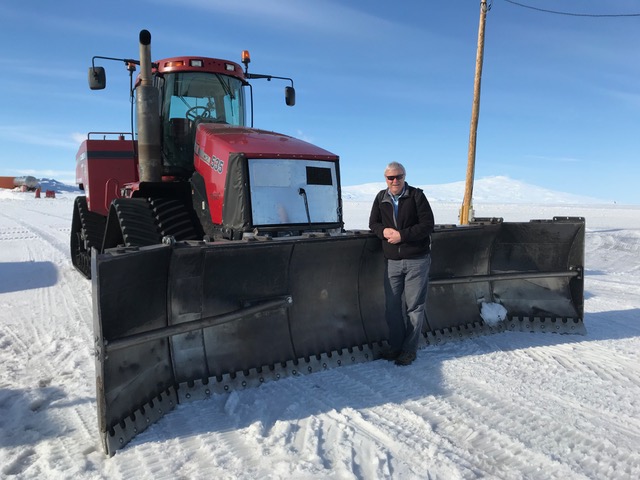 Then we climbed into a Pisten Bully for the remaining 45 minute drive out to the crash site. Finally the Pegasus came into view.
Then we climbed into a Pisten Bully for the remaining 45 minute drive out to the crash site. Finally the Pegasus came into view.
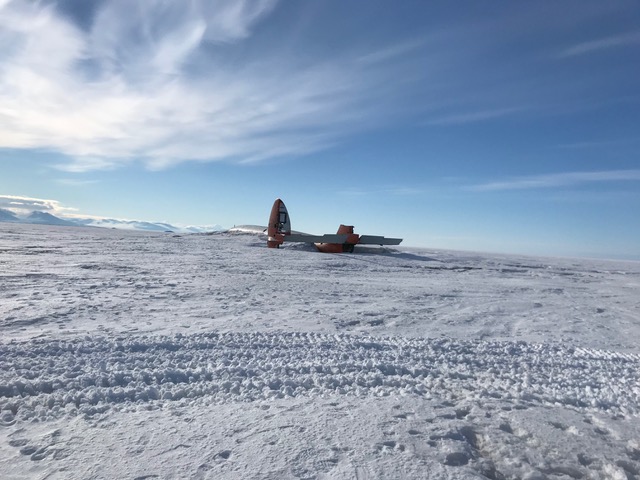 The front of the plane is pretty much buried by the drifting snow.
The front of the plane is pretty much buried by the drifting snow.
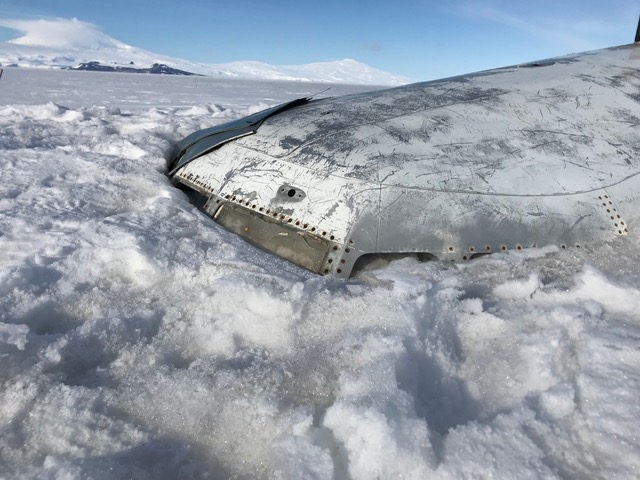 You can walk down the top of the fuselage.
You can walk down the top of the fuselage.
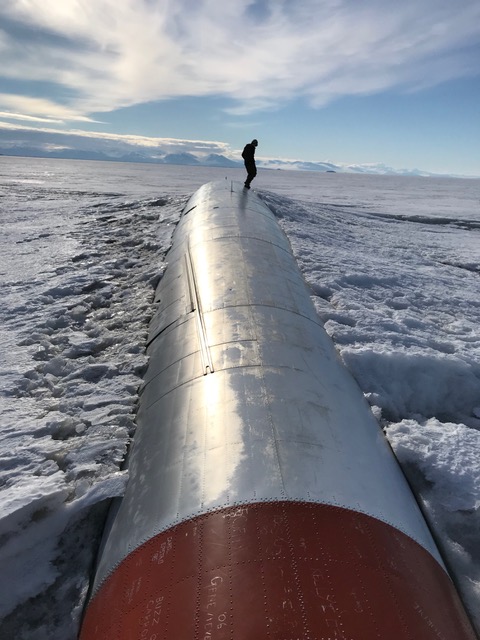 And I was inspired to imitate a classic Slim Pickens scene (an old movie reference for you youngsters):
And I was inspired to imitate a classic Slim Pickens scene (an old movie reference for you youngsters):
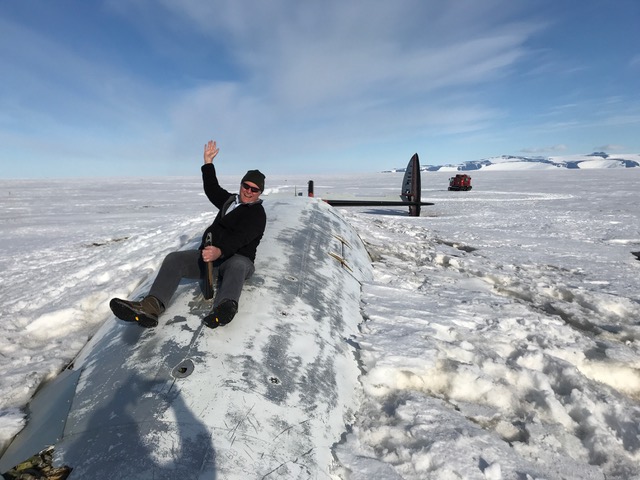 We were told we might see penguins out here. The tour the night before did. Sure enough a penguin came into view. It was wearing the standard-issue black and orange jacket of the New Zealand Antarctic Program. Oh heck. This is just a toy penguin.
We were told we might see penguins out here. The tour the night before did. Sure enough a penguin came into view. It was wearing the standard-issue black and orange jacket of the New Zealand Antarctic Program. Oh heck. This is just a toy penguin.
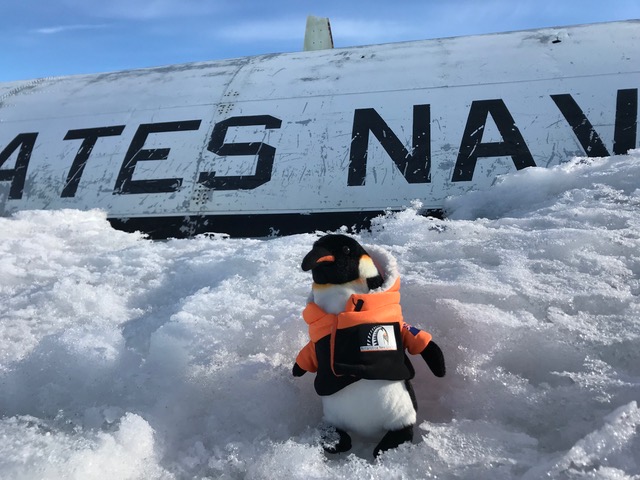 After a magical couple of hours at the crash site, where there was not a breath of wind and the world is totally and utterly silent, we headed back to Phoenix Field.
After a magical couple of hours at the crash site, where there was not a breath of wind and the world is totally and utterly silent, we headed back to Phoenix Field.
Lo and behold. Penguin tracks.
 Where there are tracks there must be penguins. And there they were. Two Emperor penguins. They must have over a 100,000 square kilometers to hang out in. And they choose to hang out next to a snow berm near some oil barrels and other heavy equipment at the airfield. Go figure.
Where there are tracks there must be penguins. And there they were. Two Emperor penguins. They must have over a 100,000 square kilometers to hang out in. And they choose to hang out next to a snow berm near some oil barrels and other heavy equipment at the airfield. Go figure.
 We spent quite a while photographing the penguins, even though they weren’t actually doing very much. (Just kind of hanging out.)
We spent quite a while photographing the penguins, even though they weren’t actually doing very much. (Just kind of hanging out.)
Finally, it was time to head back. We got in the van for the long drive back to McMurdo. As it turns out, the once a year McMurdo marathon is tomorrow. The runners and x-country skiers will run/ski out to Phoenix field and back towards town twice to get their 26.2 miles. While we were out at the crash site, a volunteer heavy equipment operator brought out a tractor and towed a snow groomer the whole length of the snow road so the runners and skiers would have a nice surface on Sunday morning. The tractor operator asked us to stay off to the side of the road on our way back so we wouldn’t spoil the nicely groomed road.
Alas, the snow sometimes gets soft off to the side of the main ice road . . .
 But the tractor operator was still nearby, and was a good sport. After all - he was the one that asked us to stay off the center of the road. Note the nicely groomed road in the foreground!
But the tractor operator was still nearby, and was a good sport. After all - he was the one that asked us to stay off the center of the road. Note the nicely groomed road in the foreground!
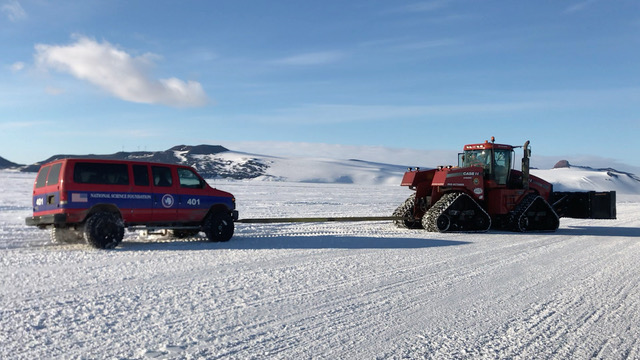 Well, we finally got back after midnight - about six hours after we started. It gave me a chance to go have a snack at the galley with the midrats. Midrats refers to the middle of the night meal that is served for the night shift workers, who often refer to themselves as “midrats" I think it is named after the Navy term “Middle Watch Rations”. Remember, for many years McMurdo was run by the Navy. So while the midrats wolfed down their full meals, I had a nice bowl of soup and then hit the hay.
Well, we finally got back after midnight - about six hours after we started. It gave me a chance to go have a snack at the galley with the midrats. Midrats refers to the middle of the night meal that is served for the night shift workers, who often refer to themselves as “midrats" I think it is named after the Navy term “Middle Watch Rations”. Remember, for many years McMurdo was run by the Navy. So while the midrats wolfed down their full meals, I had a nice bowl of soup and then hit the hay.
One more thing. Remember that I said the helicopters don’t fly on Saturday evening. Well, of course, the weather up on Erebus looked spectacular. Here is a shot of Erebus taken about 11:00 PM from the Pegasus crash site. There was just a little wisp of a cloud up around the top of Erebus, which cleared up a few minutes after I took this picture.
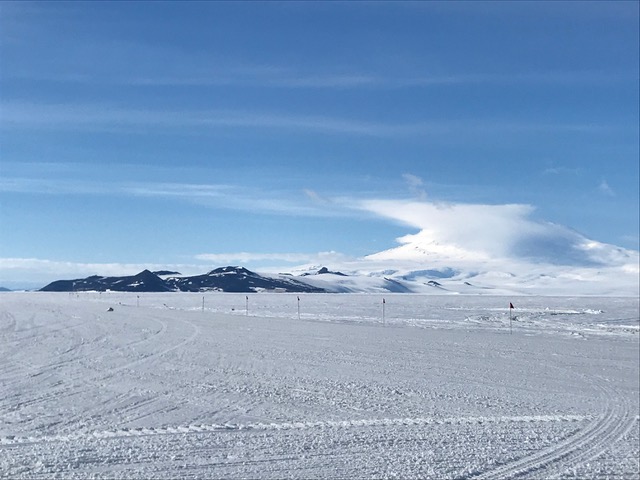 On Sunday I went out to watch some of the marathon, which was cool. Both my colleagues finished the race in under four hours! And one of them turned it into an ultra by running all the way back to town from the finish line out on the ice road, making her mileage for the day around 35 miles. She was the only runner to do this. All the other runners acknowledge her as the toughest of the tough.
On Sunday I went out to watch some of the marathon, which was cool. Both my colleagues finished the race in under four hours! And one of them turned it into an ultra by running all the way back to town from the finish line out on the ice road, making her mileage for the day around 35 miles. She was the only runner to do this. All the other runners acknowledge her as the toughest of the tough.
And of course. Erebus was perfectly clear again on Sunday . . . when the helicopters take a day off.
Finally, do you remember my last post, talking about the folk art around MCM? I wondered what would happen next to the Weddell seal photograph at the entrance to the galley. Well, on Sunday I got my answer . . . 